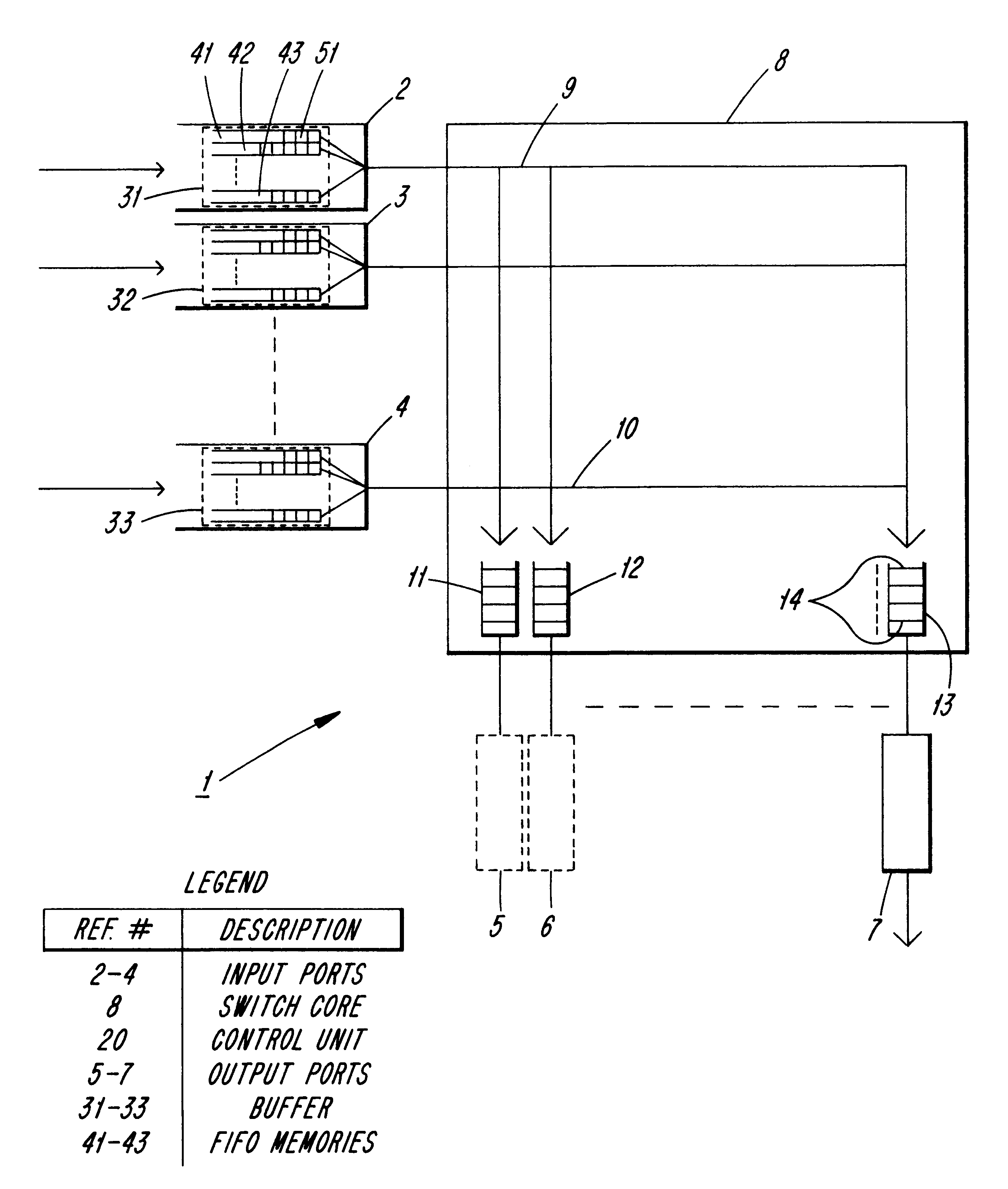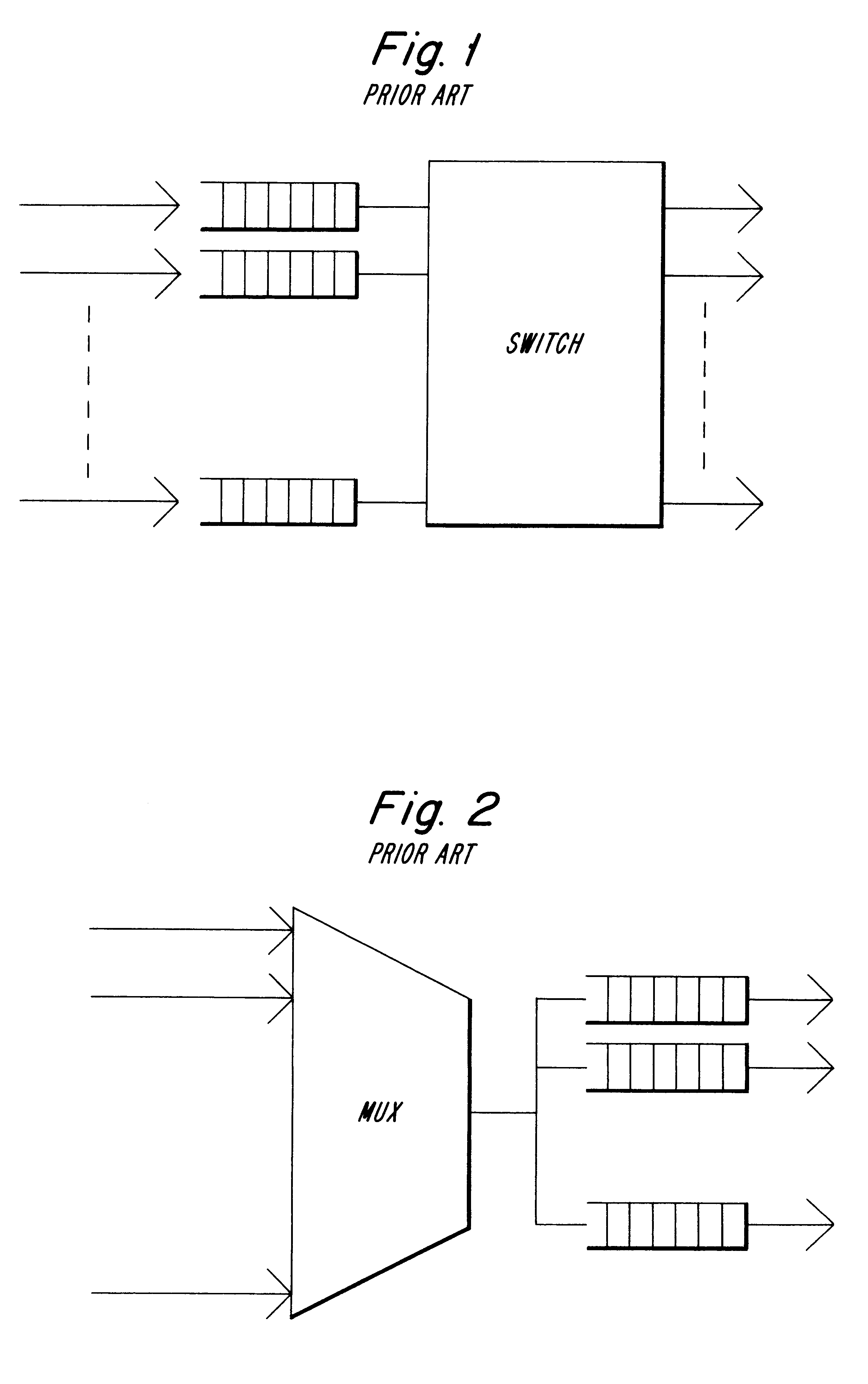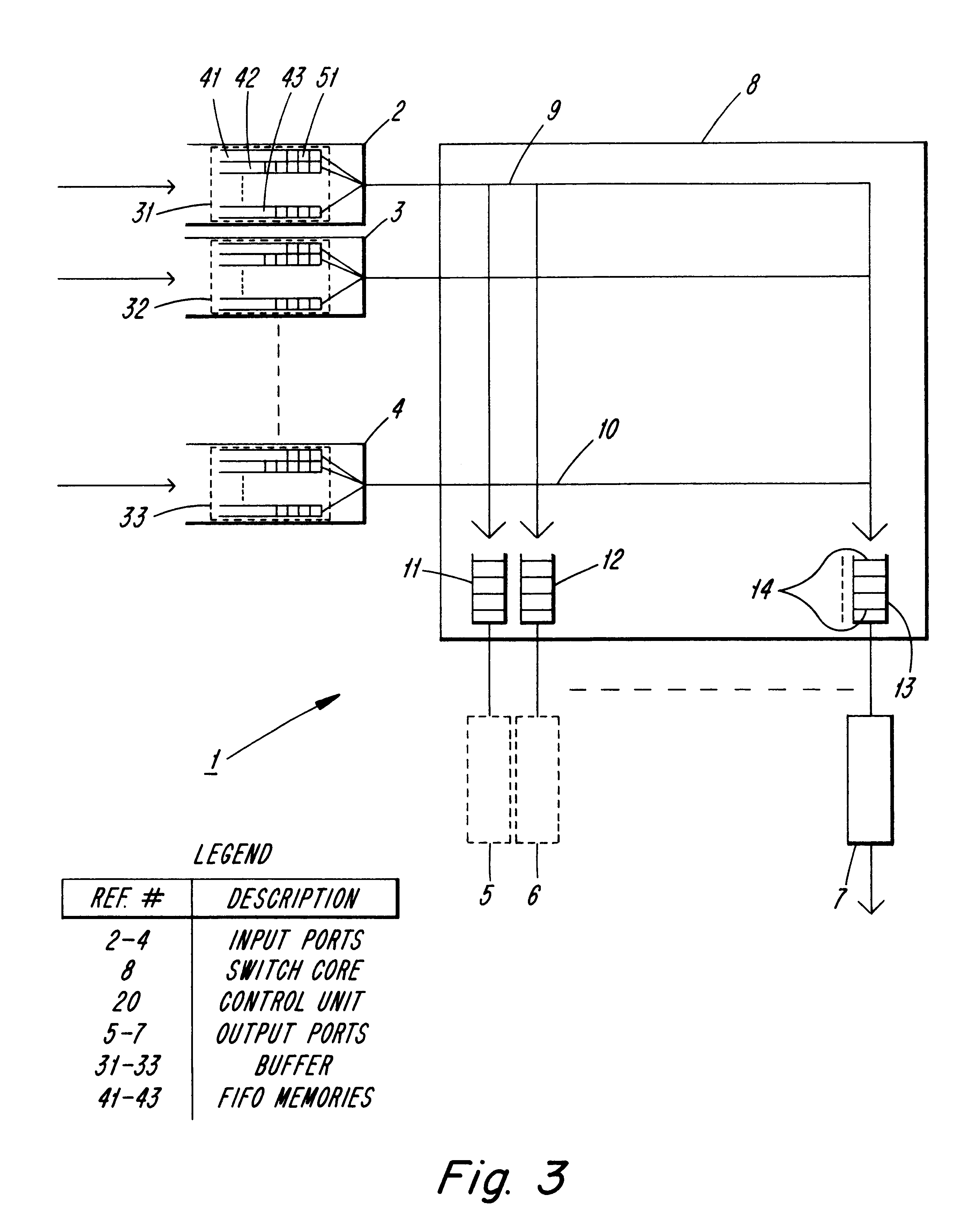Flow control for switching
- Summary
- Abstract
- Description
- Claims
- Application Information
AI Technical Summary
Benefits of technology
Problems solved by technology
Method used
Image
Examples
Embodiment Construction
FIG. 1 shows the prior art with the buffers on the input according to a common way of building switches, and FIG. 2 shows another type with buffers on the output. A third type of switch has, according to the prior art, buffers on both the inputs and outputs and it is this type to which the invention is applicable. FIG. 3 shows the invention according to a preferred embodiment. The Figure concentrates on showing the paths for the cells through the switch 1 and, for the sake of simplicity, shows only three input ports 2-4. Furthermore, for the same reason, only three output ports 5-7 are shown. It must, however, be understood that switches of today have an extremely large number of inputs and outputs, respectively.
As FIG. 3 shows, the switch comprises a switch core 8 which in itself comprises a number of connection points (e.g. 9 and 10) in matrix form so that all inputs can reach all outputs. At each output there is an output buffer 11-13 which collects the cells and sends them furth...
PUM
 Login to View More
Login to View More Abstract
Description
Claims
Application Information
 Login to View More
Login to View More - R&D
- Intellectual Property
- Life Sciences
- Materials
- Tech Scout
- Unparalleled Data Quality
- Higher Quality Content
- 60% Fewer Hallucinations
Browse by: Latest US Patents, China's latest patents, Technical Efficacy Thesaurus, Application Domain, Technology Topic, Popular Technical Reports.
© 2025 PatSnap. All rights reserved.Legal|Privacy policy|Modern Slavery Act Transparency Statement|Sitemap|About US| Contact US: help@patsnap.com



